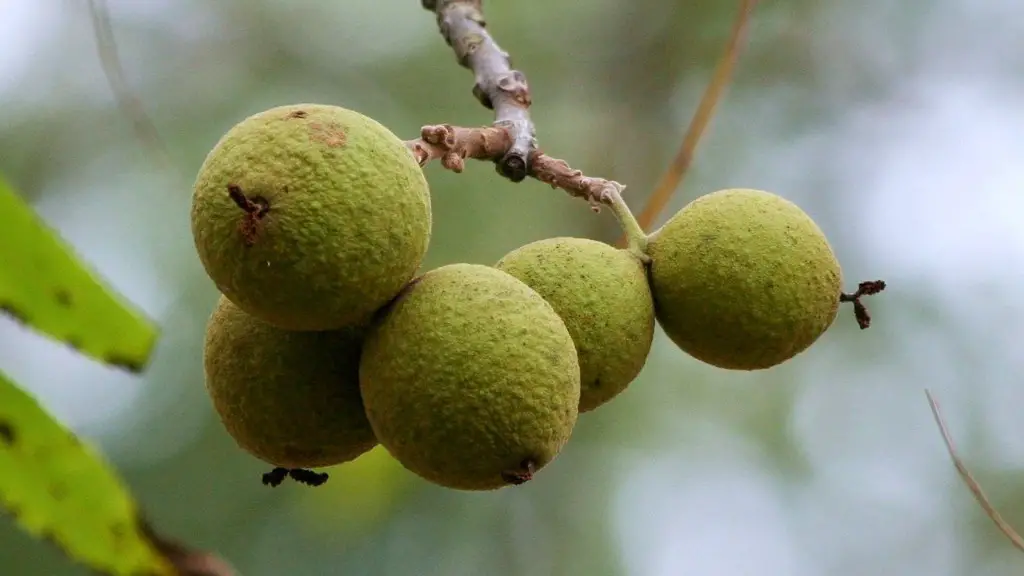As the air grows chillier and the leaves begin to fall, many people ask the same question: can a palm tree survive winter? Understandably, you may worry that your potted or outdoor palm trees will not stand the cold and will die when temperatures drop. After all, these warm-weather plants are native to tropical regions and are not expected to thrive in colder areas.
Fortunately, the answer is yes, with the right circumstances, a palm tree can survive winter. The different types of palms available, their cold hardiness, and cultural requirements vary significantly, so it is important to learn how to protect your palm tree from cold temperatures.
First off, there are several types of palm trees in the world, and some are more cold-hardy than others. Generally, if your palm variety is cold hardy to about 20 degrees Fahrenheit (or -7 degrees Celsius), you can expect your palm tree to survive in a given winter without protection. Mediterraneans and Mexican Fan Palms, for example, can usually withstand temperatures that are just a bit lower than freezing.
On the other hand, some may not be able to handle the cold. Dwarf Palm varieties, for example, cannot usually tolerate temperatures lower than 25 degrees Fahrenheit (-4.5 degrees Celsius). If your palm tree is not a cold-hardy variety, you should take the necessary steps to provide a winter home for it.
It’s important to consider the climate of the area you live in. If you live in an area that rarely reaches colder temperatures, providing winter protection should not be necessary. But, if temperatures below 20 degrees Fahrenheit (or -7 degrees Celsius) are common in your area, you may need to take extra steps to protect your palm tree from extreme cold weather.
One common way to protect a palm tree is by planting it in a container that can be moved indoors during the winter season. If you move the tree into a warm, climate-controlled environment, it will be better able to survive the cold temperatures. Make sure the potting mix is appropriate for indoor plants and that the container is large enough to accommodate the palm tree.
When to Moving Palm Trees Indoors
Ideally, you should move the palm tree indoors two to three weeks before cold weather is expected to arrive. This will give it enough time to adjust to the new environment and will help reduce the stress it feels from being moved. Make sure the indoor air temperature is no colder than 55-60 degrees Fahrenheit (13-15 degrees Celsius).
Also, keep in mind that you may need to take extra steps for overwintering your palm tree if you live in an area that is particularly cold during the winter months. You will need to provide extra insulation for the roots of the tree and make sure that the pot is made of a material that is insulating enough. Applying a layer of mulch or straw around the base of the tree’s pot can help provide even more insulation.
When you move the palm tree back outdoors, you should do so slowly. Be sure to place the container in a spot where it can receive plenty of light and do not move it too quickly to prevent the tree from going into shock.
Protecting a Palm Tree Outdoors
If you decide to keep your palm tree outdoors during winter, you should begin preparing it for the cold season. Water and fertilize your palm tree regularly, and if the wind is blowing in winter, you may want to wrap the trunk in burlap or other protective materials. Make sure the plant is well-hydrated before the cold arrives, as this will help it withstand the cold temperatures better. Also, it may be a good idea to add a thin layer of mulch or straw around the base of the pot to provide extra insulation.
When cold weather arrives, check the temperature outdoors and make sure it is not any colder than 20 degrees Fahrenheit (or -7 degrees Celsius). If the temperature drops too low, you may need to cover your palm tree with frost cloth or plastic to protect it from freezing.
Finally, remember that winter is a time of rest for plants, and if your palm tree is not a cold-hardy variety, it may have a difficult time recovering from winter without a break. Consider taking extra steps to protect your palm tree during the cold season and take the time to inspect it for signs of damage or stress.
Early Warning Signs
If your palm tree is struggling from cold weather, you may begin to see warning signs such as yellowing or drooping leaves, dryness, or an overall lack of vigor. If you notice any of these signs, take steps to provide extra warmth and protection for your palm tree. If you notice any signs of disease or pests, make sure to take the necessary steps to treat the plant.
By understanding the needs of your palm tree, you can make sure it survives winter intact and in good health. With some preparation and extra care, you can enjoy your palm tree in all seasons.
Treatments for Infestations
Beyond the cold, you should also be aware of pests or diseases that can attack your palm. One common pest is the palm weevil, which can cause serious damage to a palm tree. If you notice signs of infestation, you should take the necessary steps to treat it as soon as possible. Other pests include spider mites and scale insects, both of which can be treated with horticultural oil.
On the other hand, there are also certain diseases that may affect your palm tree. Fungal diseases, such as anthracnose and phytophthora, can cause root rot and decline in your palm tree. If you notice any signs of fungal disease, make sure to treat it immediately with a fungicide designed for use on palms.
These treatments can help keep your palms healthy and ensure that they survive the colder season. Be sure to inspect your palms regularly and be on the lookout for signs of pests or disease.
Fertilizing in Winter
In the winter season, your palm tree may not require as much fertilizer as it does in spring and summer. However, this doesn’t mean that fertilization is unnecessary. In fact, fertilizing is still an important part of winter care, as it can help your palm tree retain nitrogen and other essential minerals that it needs for growth.
When fertilizing in the winter, you should use a balanced fertilizer that is specifically designed for palm trees. Avoid using chemicals that contain nitrogen or phosphorus, as these can cause excessive growth and may make the tree more susceptible to cold damage.
Make sure to fertilize your palm tree periodically during the winter season. This will help ensure that it is strong and healthy and can withstand the colder months.
Common Mistakes to Avoid
It’s important to remember that preparing your palm tree for winter takes special care and attention. But, there are quite a few mistakes you may inadvertently make that could put your tree in danger. Here are some of the most common:
- Not providing enough protection – Some palm trees may not be cold hardy enough to withstand even moderate cold temperatures, so it is important to provide adequate protection and insulation.
- Not providing enough light – Make sure the palm tree has access to adequate light when placed indoors. Otherwise, the tree may become weak or stressed.
- Using too much fertilizer – Excessive fertilizer may cause the plant to become overstimulated and may weaken it.
By understanding the needs of your palm tree and following proper care instructions, you can make sure it survives winter uninjured and in good health. Keep these tips in mind and take the necessary steps to ensure your palm tree thrives all year round.




